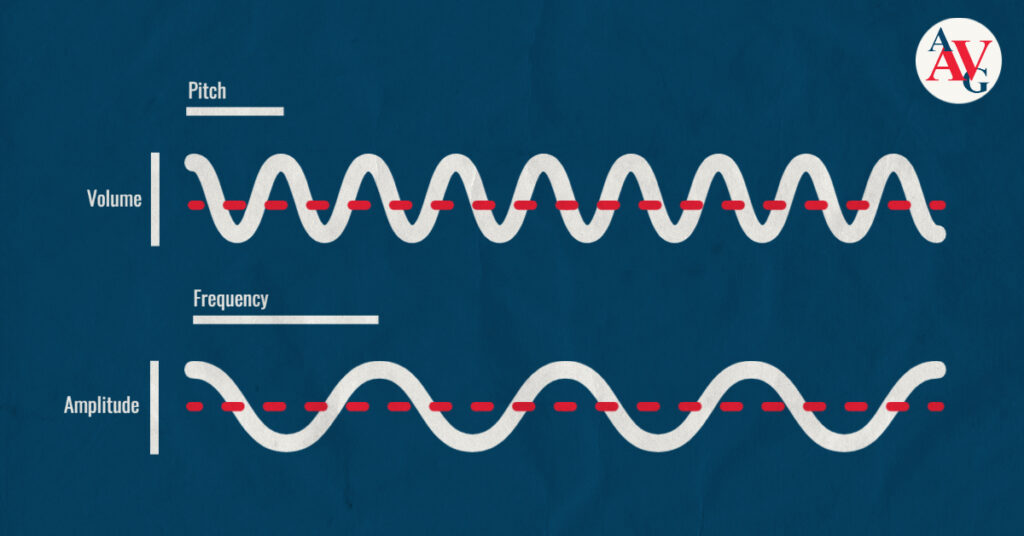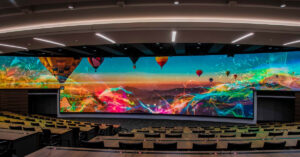
How Bad Acoustics Lose You Good Business
Published June 6, 2022
One of our sales team was recently at a local coffee shop for a networking group. While the interior space was beautiful, the service great, and the coffee strong, he said it was a horrible meeting space. Why? Poor acoustics.
He could barely understand the person sitting next to him. Between the chatting at his table and the other patrons in the seating area, the din was reverberant and clamorous. This really made a return trip to this location undesirable.
Poor acoustics do not just affect that coffee shop’s business, it also negatively affects any working environment. Undue fatigue, lack of concentration, and low productivity have all been linked to poor acoustics. There are solutions though.
In this blog, we will look at the importance of acoustics, the science behind it, and potential solutions for minimizing poor acoustics.
Are acoustics really that important?
Yes, poor acoustics can negatively affect human health both physically and mentally. Noise pollution in particular has been linked to:
- Hearing loss & Tinnitus
- Cardiovascular health problems
- Reduced sleep quality
- Increased depression and anxiety
- Reduced productivity and communication
- Just plain annoyance!
Beyond the coffee shop, let’s think about how this might affect your business: You invite a major client into your office to discuss a big deal. If your office space has challenging speech intelligibility, your client could misunderstand you, constantly ask you to repeat things, and they could mentally check out from the conversation.
Let’s think about your employees: Say your building has a noisy HVAC system, slightly squeaky, just loud enough to be a low din, and never turns off. You notice employees are going back to the coffee pot a few more times a day. You’re seeing a higher uptick of mental health days and employee disputes reported to HR. While there are many factors that could cause those behaviors, wouldn’t you want to make sure it wasn’t just because of noise pollution?
Acoustics 101 – The Physics of Sound
Before go any further, know that acoustics is a complex mixture of art and science so by no means is this blog an exhaustive knowledge base. However, the basics can be understood by everyone! In layperson’s terms, acoustics is how sound interacts with the environment. First, we need to understand what exactly sound is so we can see, and eventually hear, how it will interact with its surroundings.
So, what exactly is sound?
Scientifically, sounds are waves of vibrations through a medium. We experience this most often in a gas such as air, although sound does travel through liquids and solids. The best place to understand is with music. When you pluck a string on an acoustic guitar, the string vibrates back and forth. It’s hard to see with the naked eye but cameras can help us visualize the wave in the string.
These vibrations in the air reaches our ears and we perceive them as music notes. Notice how the thinner strings on the left in the video vibrate faster and make a higher pitch, while the thicker strings on the right vibrate more slowly and make a lower pitch? Those vibrations start the sound wave through the air!

These sound waves have both height and speed. The height of the wave, or amplitude, determines the volume. In our guitar example, this is determined by how hard you pluck or strum the string.
The pitch of the note depends on how fast the string vibrates. This speed, or frequency, is determined by the thickness and length of the string. On a guitar, if you pluck the top string, it’s a low pitch. If you press your finger on the string higher up the neck, you shorten the length of the string and raise the pitch!
If you’re still struggling to wrap your head around it, try out the Chrome Music Lab. It has an interactive piano which shows how the air moves based on what note you’re playing.

Music instruments are just that; finely tuned instruments for making high quality sounds. But everything can make sound! From human vocal cords to music speakers, to squeaky chairs and printers; it can all vibrate the air and radiate sound waves into a room.
Sound Interacting with the Environment
The physical composition of a room has a tremendous effect on sound. Like light, sound waves are reflected and absorbed by surfaces. Certain materials reflect sound really well, others absorb it, and some absorb or reflect only at certain frequencies. That means everything in a room, from the angle of the walls to the orientation of the furniture, has an effect on the sound of a space.
For example, an office with a drop tile ceiling is going to sound significantly different than the same office with an open ceiling. The open ceiling room sounds more reverberant without the tiles absorbing sound waves. Too much reverberation can make it very difficult to understand someone talking from only a few feet away!
This video is one of the best on the internet for showing this (includes nerf guns!).
Another fun example is the Whispering Gallery at Grand Central Station in New York. Because of the perfectly smooth tiles and perfect arch, none of the sound gets absorbed. This allows guests to whisper and be heard by a friend 30 feet away.
Sound waves can also interact with other sound waves, producing harmonies, phase cancelation, standing waves, modulations, and other big scientific words. All of which can cause annoying noises that interfere with daily operations.
For example, say you have two speakers in your space. Depending on their placement, there could be a point where the sound waves cross. Stand or sit there and you might not hear either speaker or it might sound like the music is being played through a tube. That all has to do with how the sound waves interact.

Improve Your Acoustics
Enough with the physics, how can you practically improve the acoustics of your business environment? Whether you skipped all the science for some practical tips or read all the way through, here you go:
Determine the source of the problem by listening
Walk through the guest and employee experience and take note. Sit where they sit. Stand where they stand. Are there any locations where it just doesn’t sound right? Where the noise is overpowering? Do you have too many speakers in the space? Does everyone have enough privacy?
Incorporate more absorbing materials
Look around your space. Bare walls and bare floors can be very reflective. Consider adding more soft goods to the room to help absorb sound and reduce reverberations. You can fill the space with rugs, drapes, or furniture to help both acoustically and aesthetically.
Keep in mind you can over do acoustic treatment. Some reverberation is good. If you somehow manage to completely deaden a space with too many soft goods, it can make conversations sound unnatural.
Change the rooms orientation to hide bad spots
If there are certain spots where you know the sound is horrible, consider rearranging the furniture. Try swapping the seat in the bad spot with a plant or art piece to ensure no guest or employee constantly hears it.
Add a fountain for privacy
If you’re having privacy issues, absorption can help and portable divisible walls are decent but don’t match everyone’s culture. Consider adding a small fountain or white noise machine as a basic form of sound masking. True sound masking must be professionally designed and installed for it to work properly. We will cover sound masking in a future blog.
Get professional analysis & sound treatment
Like we said earlier, acoustics get complicated very fast when you move beyond a small box for a room. When in doubt, hire professionals like us at Arrow AV Group. If you have a large lobby, a board room with huge glass windows, or performance space we can create a computer generated model to determine the best placement of speakers and sound treatment. By doing this, we can precisely predict so you can avoid throwing money at solutions that might work. Send us an email or fill out the contact form below for get a free acoustic review of your space today.
Get Expert AV Assistance
Latest Blogs
About Arrow AV Group
We are a premiere audiovisual integration firm serving corporate, government, healthcare, house of worship, and education markets with easy-to-use solutions that drive success. Family-owned and operated from Appleton, WI for over 35 years.





